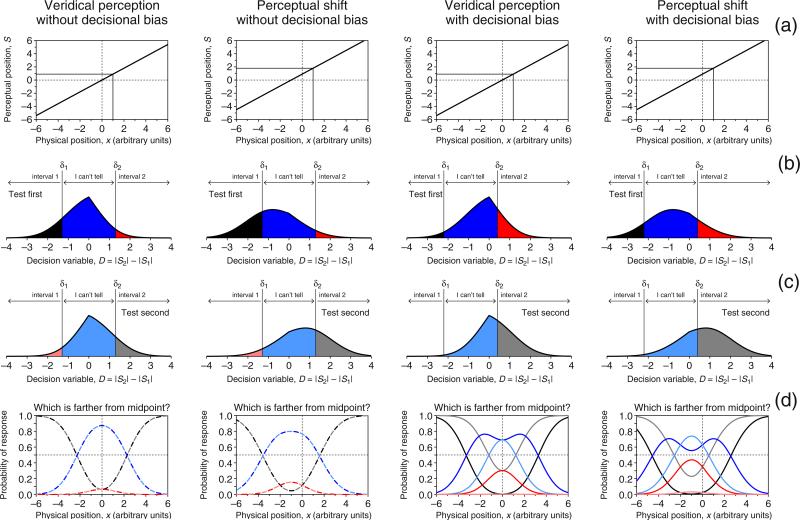Fig. 2.
Indecision model and predictions for a paired-comparison variant of the ternary landmark task under four scenarios (columns). a Psychophysical functions μ, identical to those in Fig. 1a and reflecting either veridical perception (first and third columns) or a perceptual shift (second and fourth columns). b Distributions of the decision variable given by Eq. A5 for a pair in which the test configuration is presented in the first interval with the transecting bar at x = 1, whereas the standard configuration is presented in the second interval and transected at the physical midpoint (x = 0). Also shown is the decision space with boundaries at D = δ1 and D = δ2, analogous to that in Fig. 1b. Here, judgments are also not affected by decisional bias if δ1 = −δ2 (first and second columns), and are affected by them otherwise (third and fourth columns). (c) Analogous to row b, but for the case in which the test configuration is displayed after the standard. (d) Psychometric functions for each type of response according to order of presentation. Psychometric functions for correct responses (“Interval 1” responses when the test is presented first, and “Interval 2” responses when the test is presented second) are shown in black/gray; psychometric functions for incorrect responses (“Interval 2” responses when the test is presented first and “Interval 1” responses when the test is presented second) are shown in red/pale red; psychometric functions for “I can't tell” responses (under both orders of presentation) are shown in blue/pale blue. The psychometric functions do not differ across presentation orders if there is no decisional bias (first and second columns), and they do differ if there is decisional bias (third and fourth columns). In either case, the ensemble of psychometric functions has a vertical axis of bilateral symmetry at the true perceptual midpoint—that is, at the zero crossing of μ in row a. Color is available only in the online version

